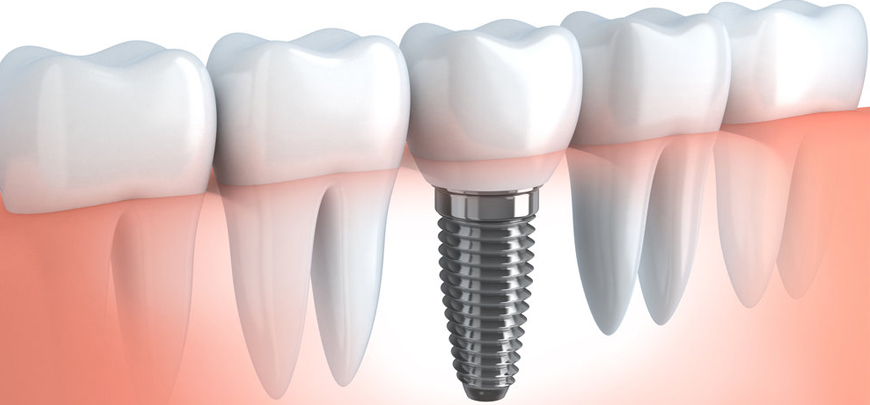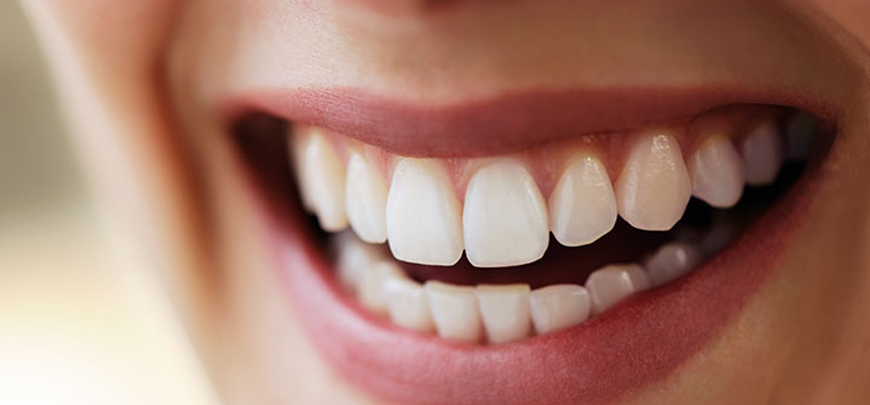DENTAL TREATMENTS
Implant

After the implants are placed, it takes a certain amount of time for them to fuse with the bone. If a surgical intervention is not performed at a very advanced level, the healing process varies between 1 month and 6 months depending on the person’s age, bone quality and physiological condition. Dentist in Turkey provides care for every patient and provides healthy teeth as soon as possible. Thanks to the latest technology, treatment processes are easy and painless in the post-treatment period.
Is there a lot of pain in the treatment of the implant?
Local anesthesia is applied for painless implant treatment. Sometimes, sedation and general anesthesia may be applied on the patient’s preference or in medical situations deemed necessary. Pain relievers used after the operation are effective in not hearing pain. Dental implant treatment will be performed without any pain with professional applications, specialist doctors and the latest System devices. You will not feel any pain during and after the procedure, but at the end of the treatment you will use it like your real teeth without even feeling the presence of implants in your mouth.
What Is Implant Material?
Implants made from titanium and alloys are not affected by oral fluids and are manufactured based on the force of the mouth. Titanium implants, coated with special materials, are best suited to tissues and have the ability to improve in a short time. The implants that will fit without any difficulty in the mouth form the structures closest to the actual tooth structure.
Root Canal Treatment

Untreated caries in the tooth enamel and dentin, traumas may lead to inflammation in the dental pulp. In this phase, there is no need for a root canal treatment. The caries is cleared away. The infected pulp texture is removed. Root canal is cleaned with little end files and washed with a special cleaning solution.
Tooth roots are filled with the fillings till the root apex. Teeth regain a natural look with aesthetic fillings or crowns. Except for some conditions, this treatment is finished generally in a single session. Success rate is high in the root canal treatment.
Dental Treatment

The most important task in preventing gum disease falls to the person himself. It is important to take care of your teeth every day, to brush your teeth and floss, and to remove the bacterial plaque. Regular visits to the dentist are equally important.
Daily oral care procedures can minimize the occurrence of tooth stone treatment prices, but may not prevent them completely. Toothbrush, dental floss, or other cleaning tools to be evaluated by a dentist with areas that cannot be reached in terms of the removal of dental plaque or tartar present is required. In the early stages of gum disease, treatment involves removing attachments (plaque and tooth stones) on the teeth and ensuring a smooth root surface. This process allows the removal of bacteria that cause inflammation in the gums.
In the majority of cases in the early stages of gum disease, Daily effective oral care following the cleaning of the tooth stone, removal of the plaque and the provision of a smooth root surface is sufficient for successful treatment. More advanced cases may require surgical treatment. The goal of this treatment is to remove the stones in the deep periodontal pockets surrounding the teeth, and to provide a smooth root surface and to create a more easily cleanable gum form.
After Periodontal treatment, patients should be regularly examined by their dentist, Plaque Control and new stone deposits should be removed from the environment. However, it is important to remember that no process can be more useful than the effective application of daily oral care procedures for the maintenance of what is obtained with periodontal treatment.
Why Does The Tooth Bleed?
The main symptom of gum disease is gum bleeding as a result of bacterial plaque and tartar accumulation, creating inflammation in the gums and jawbones. The result is bleeding gums.
Composite Fill |Bonding

It has been used safely and frequently in recent years thanks to advances in adhesive technique. Preparation in a short time in the clinical environment, not requiring anesthesia, is the preferred reason because of the low cost compared to other applications.
Lengthening of the tooth length, closing the gaps, removing tiny irregularities and brings a solution to the problem of color. It can be applied in any age group. It helps people to smile naturally and beautifully in a short period of time.
Orthodontics| Braces

Orthodontics is a branch of science that examines the relationship between the teeth and the jaw bones, Orthodontic Treatment prices in turkey the jaw bones and the jaw bones. Orthodontic is the treatment of disorders in this system. Cross-fertilization can be genetic, as well as finger sucking in children, as well as dental shots in adults can be caused by many reasons. Obscure and irregular-looking teeth, as demonstrated by aesthetically unsatisfactory appearance, at the same time, cause the degradation of oral health and general health.
What can we do to prevent orthodontic disorder?
Family can prevent or minimize environmental factors. In the beginning, a periodic external control is essential. Since the milk teeth are regularly applied fluoride and the permanent molar teeth should be applied as a fissure protector. In addition, the milk teeth which are forced to be pulled early should be kept in place until the permanent teeth and for this to be made a placeholder.
Children should be discouraged from bad habits such as sucking fingers, using a long-term bottle, and breathing in the mouth until the age of 4 at the latest. After this age, jaw facial development disorders are permanent.
If you have a family or dentist who suspects any problems in the jaw or teeth, you should be evaluated by an orthodontist.
How do I know I need orthodontic treatment?
The first orthodontic control is performed by the orthodontist at the age of 6-7 where the permanent dentition begins. Your next visits will be made by your dentist. Your dentist may ask for an orthodontist consultation if he / she needs to be around 10 – 12 years old. In addition, orthodontic treatment can be performed for the purpose of assisting in the prosthetic treatment even in adult cases.
Can adults also have orthodontic treatment?
Yes, adults can also be treated comfortably. In contrast, it is possible to move the teeth at all ages with a healthy gum. However, early diagnosis of anomalies is more options for treatment by an orthodontist should be evaluated at an early age closure.
How long does orthodontic treatment last ?
Active treatment lasts an average of 1.5-2 years. However, the time depends on the type of treatment, the patient’s age, and the co-occurrence. It can be even longer as it is shorter.
Prosthetic Teeth

Implants are a branch that aims to fill the spaces of oral tissues and missing teeth; restore the form, function, appearance and health of the mouth as a whole. It aims to provide oral rehabilitation in all functions such as cosmetic, aesthetic, phonetic and chewing. For this purpose, it offers solutions such as movable, fixed, partial prosthesis, full palate prosthesis, bridge, crowns according to the patient’s oral structure and treatment requirements.
Removable Dentures
They are the prostheses that the patients can attach and remove.
Partial Dentures
In order to remove multiple missing teeth, a brace such as a hook is supported by neighboring teeth and can be worn by the patient çıkarılabilecek dentures.
Total Dentures
In complete dental deficiencies, the mouth is placed in the regions of the palate, among the people called “palate” are movable dentures.
Precision Linked Prosthesis
They are moving dentures that are used in multiple teeth deficiency, which take their strength from porcelain crowns made on the natural teeth that remain in the mouth.
Fixed Dentures;The patient’s mouth is fixed on his or her own teeth or implants.
BridgingDental Implants Are artificial teeth that are surgically placed into the jaw and cemented into the jaw.
Oral-Maxillofacial Surgery

Jaw surgery is a practice field to bring back the health and aesthetics of the bottom and top jaws and hard and soft tissues on top of/inside the jaws.
Some surgeries done within this context are as follows:
- The removal of unsavable teeth, roots and infective tissues developed as a result of those.
- Extraction of impacted wisdom teeth.
- The removal of gum and bone apsidas, cysts and tumors related to teeth roots or originating from soft tissues.
- The detection and treatments of jaw fractures.
- Implant applications, applications to save space for implants (graft, sinüs plasti etc)
- Treatments of facial paralysis, jaw joint function defects, muscle pain and neuralgia
- The application of tgooth root end (Apical Resection) surgeries aiming to save the tooth in unsuccesful canal treatments.
- Common treatments with orthodonty to gain the impacted teeth.
- Cleft lip/palate treatments.
- Ensuring profficiency of the basis that especially the removable prosthesis will be put on.
- Sinus treatments (lifting up the floppy sinus, closing the open sinus etc)
- Applications for gum aesthetics.
Aesthetic Dentistry

The way of beautiful smile passes from bright,well maintained and beautiful arrayed teeth. If you have a dark colored teeth, prominent gingivals when you smile, missing teeth, complaining of your teeth intermittent or be involved array , you can apply to aesthetic dentistry for the solution of all these problems
When designing your smile your age, your gender, your gingivals, gums, lips and facial contours are considered as a whole. In this context satisfactory results are obtained by applying the most appropriate planning to you.
All on Four Treatments

What is All On Four implant technique? All On Four implant technique is a procedure enabling to fix tooth prothesis on four pieces of dental implant placed in patients with no teeth, at certain angles.
What are the advantages of All On Four implant technique? We can list the advantages of All On Four treatment as stated below:
To whom can All On Four implant technique be applied? All On Four treatment can be applied to all patients without teeth (not having any teeth) who don’t have any systematic disease that could create an obstacle for dental implant surgery and who have sufficient bone mass.
What are the stages of All On Four treatment? First of all a detailed clinic and radiological examination should be done to patients for who All On Four treatment is planned. By making meausrements through computerized tomography (BT) a suitable plan is made for the patient. All On Four procedure is composed of two parts as surgery and dental prothesis process. After 4 pieces of dental implants are applied to the patient on the first day of treatment, temporary dental prothesis is fixed on dental implants on the same day. 3 months later permanent teeth prothesis is applied to patient
Will I have any pain after All on Four process? Just like the case after each dental implant operation, a certain amount of pain and swelling can occur after operation. But these complaints can be easily controlled by taking the medicines recommended by your doctor .
I am very afraid of surgery. All On Four process is a procedure that can be easily applied under local anesthesia. But it can be realized with sedation or under general anesthesia for patients with anxiety and high level of fear.
How will I get my nutrition after All On Four process? After the process, you can immediately used the temporary dental prosthesis being fixed on dental implants. But during 3 month period when dental implants integrate with the bone, you should get a diet that is recommended by your doctor. With your permanent prosthesis that will be applied after process of 3 months is completed you can get your nutrition as you wish.
Is All On Four process a successful procedure? The studies conducted show that All On Four process is a treatment method yielding high success ratio in long term follow ups.





